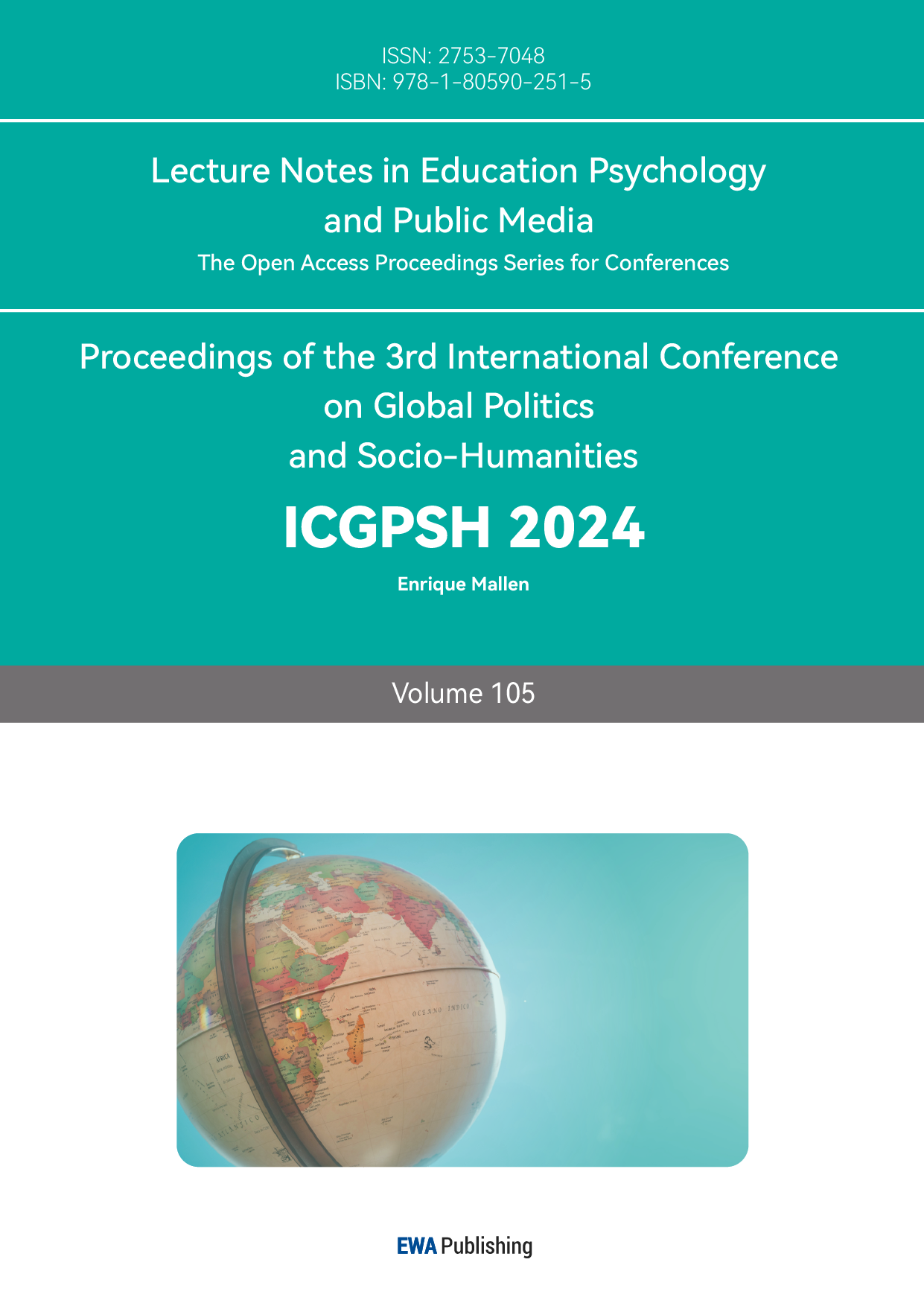References
[1]. Ripsman, Norrin M. , and Jack S. Levy. “Wishful Thinking or Buying Time? The Logic of British Appeasement in the 1930s. ” International Security, Fall, 2008, Vol. 33, No. 2(Fall, 2008), pp, 148-181.
[2]. Qing, Tang. “The Evolution of US Policy towards Japan from 1931-1941. ” Journal of Jianghan University, 2005(04), 70-73.
[3]. Sagan, Scott D. . “The Origins of the Pacific War. ” The Journal of Interdisciplinary History, Vol. 18, No. 4, The Origin and Prevention of Major Wars(Spring, 1988), pp. 893-922.
[4]. Treisman, Daniel. “Rational Appeasement. ” International Organization, Spring, 2004, Vol. 58, No. 2(Spring, 2004), pp. 345-373.
[5]. Iriye, Akiya. “The Origins of the Second World War in Asia and the Pacific. ” New York, NY: Routledge, 2013[1987].
[6]. Kennedy, Paul. “The Tradition of Appeasement in British Foreign Policy 1865-1939. ” British Journal of International Studies 2, No. 3(1976), 195-215.
[7]. Schroeder, Paul. “Munich and the British Tradition. ” The Historical Journal 19, No. 1(1976), 223-243.
[8]. Lobell, Steven E. . “The Challenge of Hegemony: Grand Strategy, Trade, and Domestic Politics. ” University of Michigan Press, 2009.
[9]. Putman, Robert D. . “Diplomacy and Domestic Politics: The Logic of Two-Level Games. ” International Organization, Vol. 42, No. 3(Summer, 1988), pp. 427-460.
[10]. Snyder, Jack. “Myth of Empire: Domestic Politics and International Ambition. ” Cornell University Press, 1991.
[11]. Gourevitch, Peter. “The second image reversed: the international sources of domestic politics. ” International Organization 32, 4, Autumn 1978.
[12]. Doenecke, Justus D. . “American Isolationism, 1939-1941. ”, The Journal of Libertarian Studies, Vol. V1, No. 3-4(Summer/fall 1982).
[13]. McCulloch, Tony. “US isolationism in the 1930s:democracy came under increasing threat in the 1930s. Why did the world’s most powerful democracy not seem interested?” 20th Century History Review(Vol. 2, Issue 2), Gale General OneFile, p 20.
[14]. “The Gallup Poll-Public Opinion 1935-1971. ” Vol 1 1935-1948.
[15]. “History of International Relations. ” Modern Volume, Peking University Press, 2001.
[16]. Heald, Stephen. “Documents on International Affairs, 1937. ” Oxford University Press for the Royal Institute of International Affairs, 1939.
[17]. “Sino-US Relations Compilation. ” No. 1, World Knowledge Publishing House, 1957.
[18]. Feis, Herbert. “Road to Pearl Harbor: The Coming of the War Between the United States and Japan. ” Princeton University Press, 1971.
[19]. “Selected Documents on Modern China's External Relations. ” 1840-1949, Volume 2, Shanghai People’s Publishing House, 1977.
[20]. Adams, Frederick C. . “The Road to Pearl Harbor: A Reexamination of American Far Eastern Policy, July 1937- December 1938. ” The Journal of American History, Vol. 58, No. 1(Jun. , 1971), pp. 73-92.
[21]. Hoffer, Peter C. . “American Businessman and the Japan Trade, 1931-1941: A Case Study of Attitude Formation. ” Pacific Historical Review, May, 1972, No. 2(May, 1972), pp. 189-205.
[22]. Iokibe, Makoto. “The History of US-Japan Relations, From Perry to the Present. ” Yuhikaku Publishing Co. Ltd, 2008.
[23]. de Betts, Ralph. “The United States of America, 1933-1937. ”
[24]. Morton, Louis. “War Plan Orange: Evolution of a strategy. ” World Politics, Vol. 11, No. 2(Jan. , 1959), pp. 221-250.



